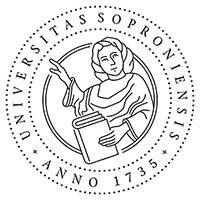The Persuasive Speech in Rhetoric and Tales
DOI:
https://doi.org/10.17165/TP.2017.3.12Absztrakt
Although the original sitation of rhetorical speech and the speech in tales bears resemblance with each other (mutual attention of the speaker and the audience, the aesthetic formation of the speech), but in my paper I aim to analyse the difference of persuasion. In rhetoric it means the deliberate use of certain formations to achieve the desired effect on the audience. The basis of persuasion is the acceptance of probability. The tale can be interpreted as a meaning revelation in the hermeneutic progress of understanding, which supposes an equal inclusion both from the side of the speaker and the listener. In this case the speech embodies the world-like presence of language. In conclusion, these two methods of persuasion are in relationship with deeper disparities of the aesthetic impression and the aesthetic recognition.
Hivatkozások
Aczél, P. (2012). Médiaretorika. Budapest: Magyar Mercurius.
Aristotle: Rhetoric. (Translated by W. Rhys Roberts) Classics. Mit. Edu. 1994.
Biczó, G. (2006). A mese hermeneutikája, in Bálint, P. (ed). Közelítések a meséhez. Budapest: Didakt Kiadó. 9-32.
Foss, S., Griffin, C. (1995). Beyond Persusasion: A Proposal for an Invitational Rhetoric. Communication Monographs 2(1), 2-18. https://doi.org/10.1080/03637759509376345
Derrida, J. (1992). Given Time: I. Counterfeit Money (trans. Peggy Kamuf). Chicago: University of Chicago Press.
Gadamer, H.G. (2004): Truth and Method. London-New York: Continuum.
Gadamer, H. G. (1986): The Relevance of Beautiful and Other Essays (trans. Nicholas
Walker, ed. Robert Bernasconi). Cambridge: Cambridge Universtiy Press.
Nietzsche, F. (1989): On Rhetoric and Language. (Ed. and Transl.by Gilman, S., Blair, C. & Parent, D. J.). Oxford: Oxford University Press.
Letöltések
Megjelent
Folyóirat szám
Rovat
License
Copyright (c) 2017 Csilla Molnár

This work is licensed under a Creative Commons Attribution-NonCommercial-NoDerivatives 4.0 International License.








